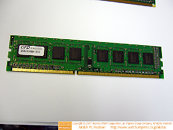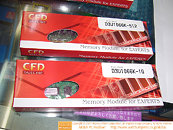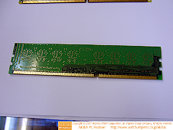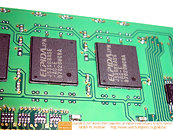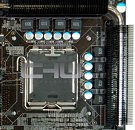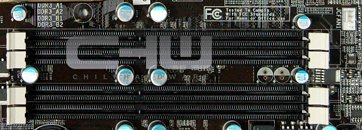Hynix Receives DDR3 Validation from Intel
Hynix Semiconductor today announced it has received validation on its DDR3 memory components and modules from Intel. The newly-validated DDR3 products are 1GB DDR3 SDRAM Unbuffered-DIMMs manufactured on 80nm process technology. These devices have operating speeds from 800MHz to 1066MHz with reduced voltage to 1.5V. These speeds are offered in latency combinations of 5-5-5 and 6-6-6 for the 800MHz, and 7-7-7 for the 1066MHz memory modules. Mass production of the 1GB DDR3 on the 80nm line will begin in the third quarter of this year. Hynix plans to manufacture the product on a 66nm process beginning in late 2007.
